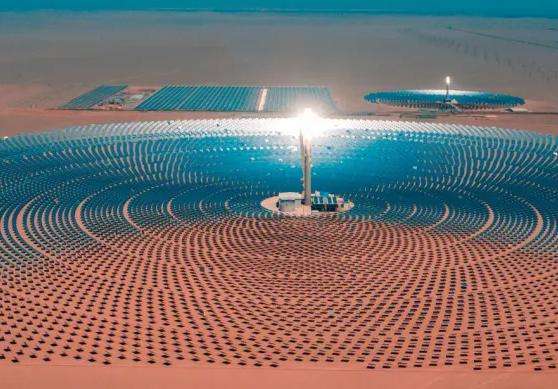The principle of three-phase four-wire transformer output:
That is, the 380V/220V neutral point is directly grounded to the low power system tension. This power system has three-phase wires (live wires) A, B, C and a zero wire. The reason why this neutral line is called neutral line is that it starts from the neutral point of the secondary side of the transformer, and the neutral point of the secondary side is directly connected to the earth and the zero potential of the earth, it is what we call the neutral line. In the three-phase four-wire low-voltage power system, it is both the working neutral line and the protection neutral line. It is now called the PEN line, where PE is the protective neutral line and N is the working neutral line. Together they form the PEN line. The PEN line represents the working neutral line also serves as a protective neutral line, commonlycalled “zero and mass combined into one”.
Principle of Transformer:
A transformer is a device that converts alternating voltage, current and impedance. When alternating current flows through the primary coil, alternating current is generated in the iron (or) core. magnetic core). The magnetic flux induces a voltage (or current) in the secondary coil. A transformer consists of an iron core (or magnetic core) and a coil. The coil has two or more windings. The winding connected to the power supply is called primary coil and the remaining windings are called secondary coils. In a generator, whether the coil is moving in a magnetic field or the magnetic field is moving in a stationary coil, an electric potential can be induced in the coil. In both cases, the value of the magnetic flux remains unchanged, but the number of magnetics. the fluxes cutting the coil change, this is theprinciple of mutual induction. A transformer is a device that uses electromagnetic mutual induction to transform voltage, current and impedance.
The generator is a four-wire three-phase (three fires and one zero), and the distribution cabinet is a five-wire three-phase (three fires and one zero and one after fire). to fire and zero to zero, the distribution cabinet The ground wire is directly connected to the ground wire.
If the distribution cabinet and the generator are very close, the distribution cabinet and the generator must share a common ground wire, that is, the generator shell, the shell of the distribution cabinet and the zero line of the generator (neutral). line) are all connected together, the ground wire of the distribution cabinet is drawn from the neutral line and the metal shell of the distribution cabinet. There is no need to go to the generator to get it.
If the cabinet dielectrical distribution is far from the generator, the electrical distribution cabinet must have an earthing body conforming to the regulations and be connected to the earth wire of the electrical distribution cabinet and to the metal shell of the electrical distribution cabinet 'energy.
380V/220V low voltage power distribution system can be divided into: IT system, TT system and TN system according to different forms of protective grounding.
The power neutral point of the computer system is isolated from ground or high impedance grounded, while the metal shell of the electrical equipment is directly grounded. That is to say: it used to be called the protective grounding of the three-phase three-wire power system.
The neutral point of the TT system power supply is directly grounded; the metal shell of the electrical equipment is also directly groundedand has nothing to do with grounding the neutral point of the power supply. That is, the protective grounding of the previous three-phase four-wire power system.
The TN system, in a three-phase four-wire 380/220 V low-voltage electrical network where the neutral point of the transformer or generator is directly grounded, connects the metal shell of the equipment electrical power that is not charged during normal operation via the public protection line Direct electrical connection to the neutral point of the power supply. That is, the protection of the old three-phase four-wire power system was connected to zero.
TN system power supplyThe neutral point is directly grounded and has a neutral wire. According to its protection line form, the TN system is divided into three types: TN-C system, TN-S system and TN-C-S system.
(1) TN-C system (three-phase four-wire system),The neutral line (N) and protection line (PE) of this system are integrated, and this line is also called protected neutral line (PEN). Its advantage is that it saves one wire, but its disadvantage is that when the three-phase load is unbalanced or the protective neutral line is disconnected, the metal shell of all electrical equipment will be charged with dangerous voltage.
(2) The TN-S system is a three-phase, five-wire system. The N line and PE line of this system are separated and the five-wire power supply is used from the transformer. . Its advantage is that no current flows through the PE line under normal circumstances, so it will not cause electromagnetic interference to other equipment connected to the PE line. In addition, since the N line is separated from the PE line, disconnecting the N line will not affect the protective effect of the PE line.
③T systemN-C-S (three-phase four-wire and three-phase five-wire hybrid system), this system is a four-wire system from the transformer to the user distribution box, and the neutral wire and protective earth wire are integrated; The neutral wire and protective earth wire from the distribution box to the user are separated, so it has the characteristics of TN-C system and TN-S system. It is often used in poor environments. at the end of the distribution system or electromagnetic interference requirements in more stringent locations.














